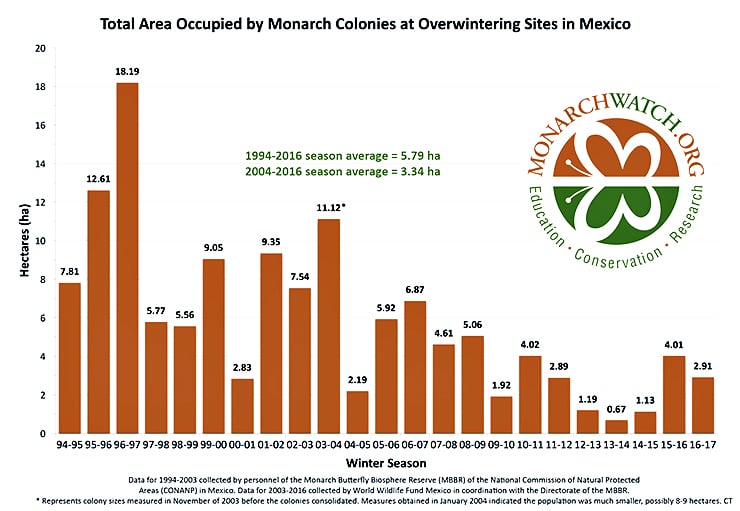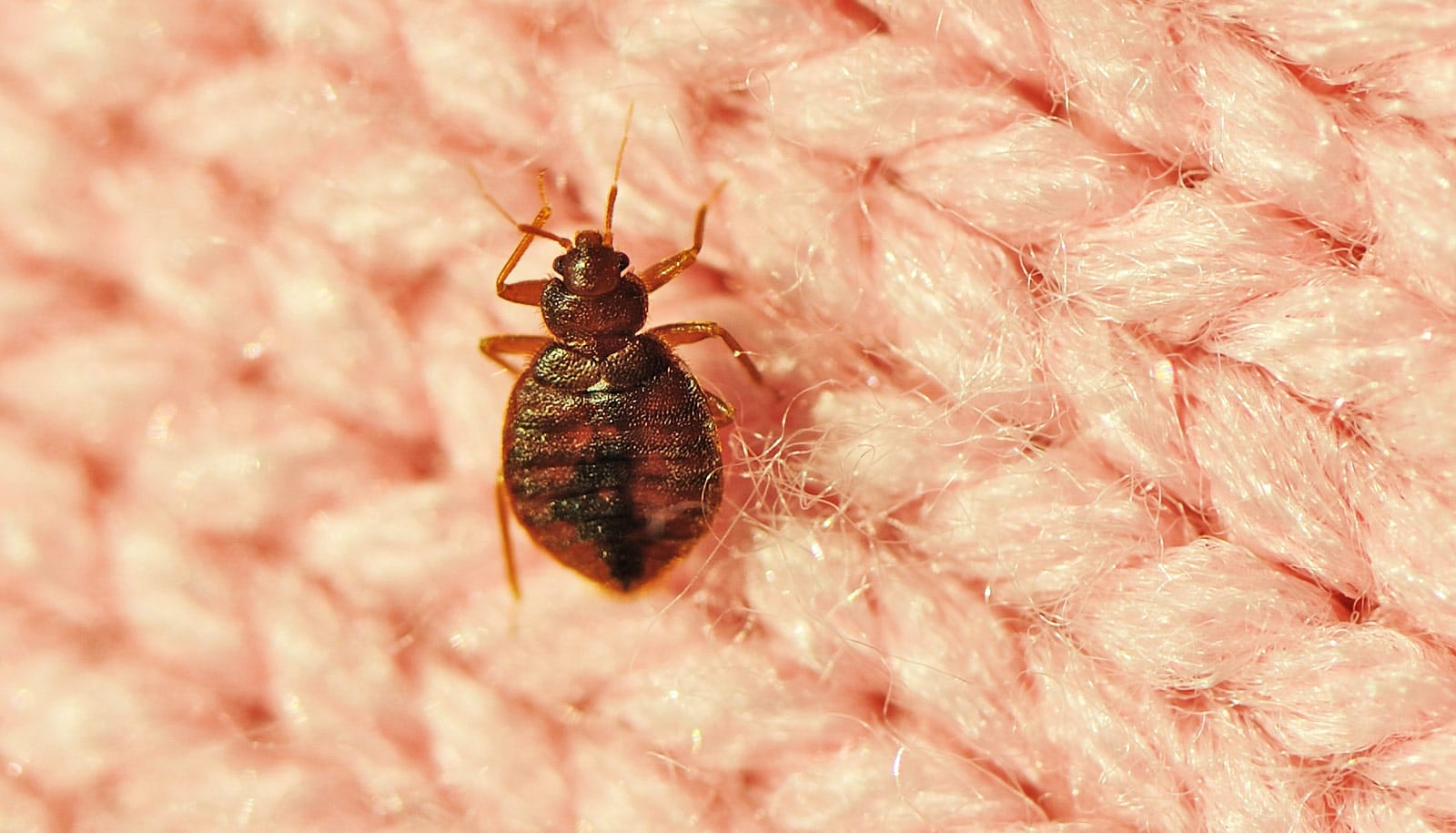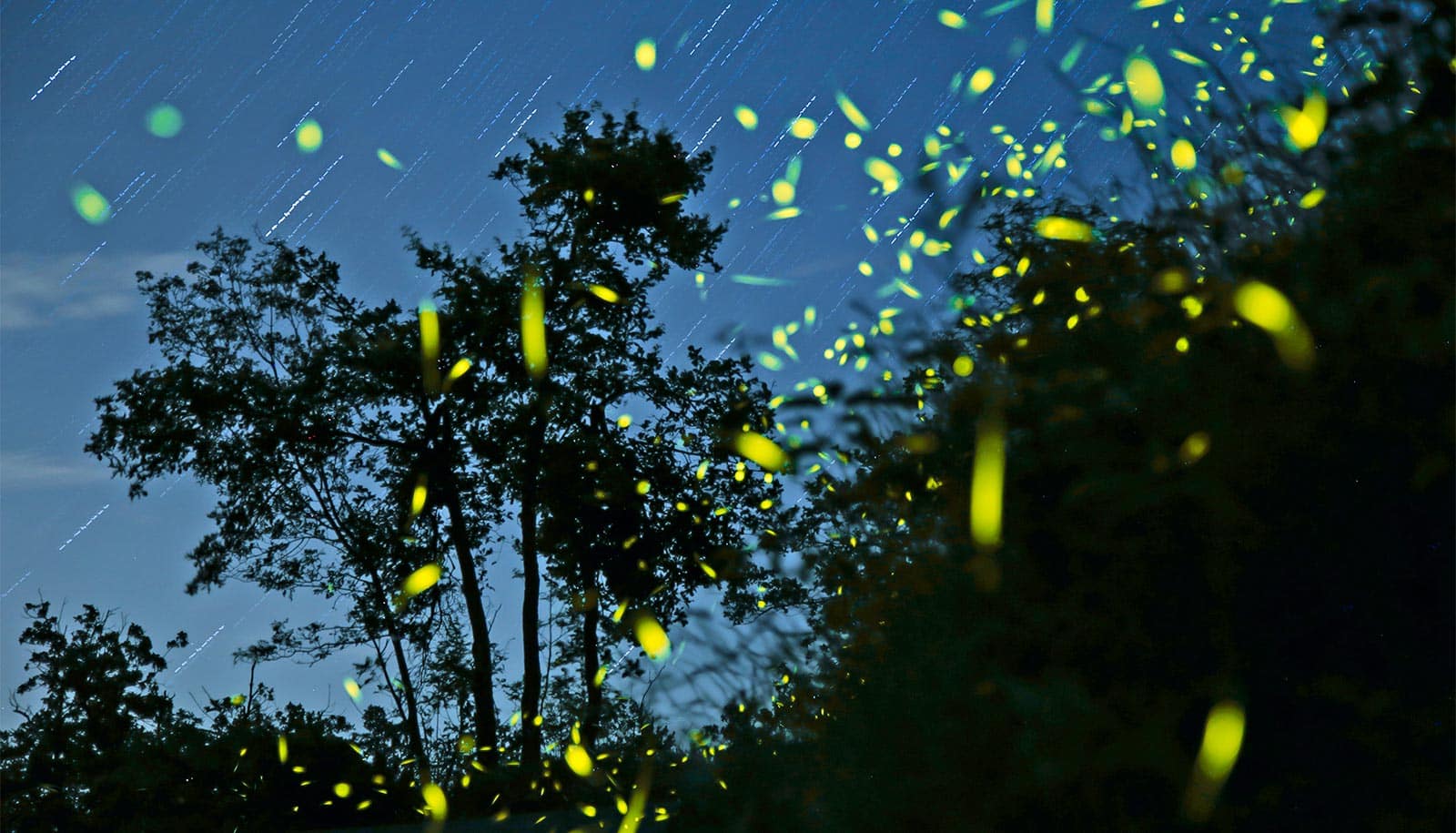New research suggests that monarch butterflies’ moving away from farm fields once covered with milkweed explains a discrepancy between the decreasing population of the butterflies wintering in Mexico and American citizen scientists’ yearly census of the population, which have not shown the same decrease.
Researchers’ findings also bolster the view that loss of milkweed, the only plant on which monarchs will lay eggs, has forced monarch populations to fall.

Monarch butterfly populations have taken a nosedive over the last 20 years, according to researchers who monitor the number of butterflies that spend the winter in Mexico every year. But organizations of citizen scientists in the United States who conduct yearly censuses of monarchs in state parks and other locations in the summer have reported no consistent dip in the number of butterflies they see.
This discrepancy has led some to challenge the widely accepted belief that loss of milkweed on the US landscape has driven the decline of the species.
John Pleasants, an adjunct assistant professor in the ecology, evolution, and organismal biology department at Iowa State University, says long-term monitoring of butterflies and eggs on milkweed stems during the summer breeding season across the United States didn’t note the same decline as that documented in central Mexico, where all monarch butterflies migrate for the winter.
“These census findings, which didn’t see the same drop in population, cast doubt on the milkweed narrative,” Pleasants says. “It made people think maybe the problem isn’t with milkweed becoming harder to find. Instead, maybe there’s something going wrong as the monarchs migrate to Mexico.”
Pleasants set out to pinpoint the reason for the discrepancy and found that it results from the fact that monarch activity has shifted out of agricultural fields, where milkweeds were once common.
For example, roughly half of farm fields in Iowa used to have patches of milkweed, but the widespread use of the herbicide glyphosate has kept fields free of milkweed in recent years. That leaves monarchs with no choice but to concentrate in other areas with milkweed, Pleasants says. It is these other areas where summer censuses are conducted.
Monarch butterflies are up against multiple threats
“The census takers used to see only a small sliver of the total population,” he says. “Now, they’re seeing a higher proportion since the monarchs aren’t spending time in agricultural fields anymore.”
This increasing concentration effect masks the decline in population size, Pleasants says.
The study accounts for the change in the proportion of monarchs inside and outside of agricultural fields by looking at the change in the proportion of milkweeds in those two areas using historical milkweed abundance data gathered by agronomists. The summer census data are then corrected to account for the shifting proportions and thus reveal actual population size.
“Then we see with these corrected numbers that, yes, the population of monarchs in the United States is declining at the same rate as the overwintering population,” Pleasants says.
The finding supports previous studies suggesting that an increase in available milkweed could help the monarch population rebound. Such studies have led to efforts across the country to restore monarch habitat.
Milkweed in suburbs and cities could restore monarchs
Pleasants calls monarch butterflies an “iconic species.” He says the monarch butterfly’s distinct appearance and lifecycle, plus its unique migratory behavior, inspire people to undertake conservation efforts to reverse its decline.
“It’s a fascinating and awe-inspiring bit of biology,” he says.
The study appears in the journal PLOS ONE.
Source: Iowa State University



